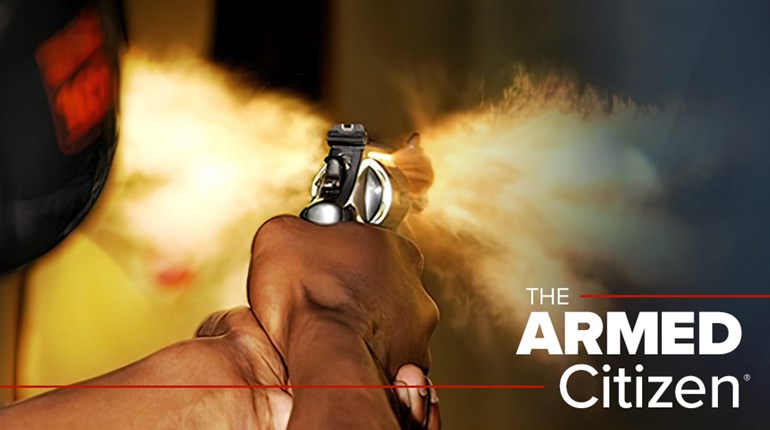
When Judge Roger Benitez, U.S. district judge for the Southern District of California, recently ruled in the case Miller v. Bonta that California’s longstanding ban on so-called “assault weapons” is unconstitutional, he did so in no uncertain terms. His decision was laced with interesting facts that basically shredded the arguments made by California Attorney General Rob Bonta (D) and his team of lawyers and “expert” witnesses.
“The State’s attempt to ban these popular firearms creates the extreme policy that a handful of criminals can dictate the conduct and infringe on the freedom of law-abiding citizens,” Benitez wrote in the ruling. “As Heller explains, the Second Amendment takes certain policy choices and removes them beyond the realm of permissible state action. California’s answer to the criminal misuse of a few is to disarm its many good residents. That knee-jerk reaction is constitutionally untenable, just as it was 250 years ago. The Second Amendment stands as a shield from government imposition of that policy.”
Let’s take a look at five key takeaways from Benitez’s ruling.
The Law Doesn’t Pass the New Bruen Standard
Under the new Bruen standard, the court must ask whether the Second Amendment’s plain text covers an individual’s conduct. If the answer to that question is “yes,” which it is in this case, the court must next ask whether there exists a “’historical precedent’ from before, during, and even after the founding [that] evidences a comparable tradition of regulation?”
Although the state tried to “prove” that there was plenty of historical precedent, Benitez found their arguments woefully lacking, writing in his opinion: “Though it is the State’s burden, even after having been offered a clear opportunity to do so, the State has not identified any law, anywhere, at any time, between 1791 and 1868 that prohibited simple possession of a gun.”
Judge Benitez was also highly critical of some of the laws the state used in trying to make its case, writing: “Incredibly, the State asks this Court to treat as analogues laws on the State’s list which applied only to particular disfavored people groups, such as slaves, Blacks, or Mulattos. Those laws are not relevant to the ‘assault weapon’ ban challenged in this case. Even if they were, this Court would give such discriminatory laws little or no weight.”
Semi-Automatic Rifles Are “Commonly Owned”
California also tried to make the argument that AR-15-type rifles are not commonly owned by law-abiding persons for lawful purposes, despite the fact that there are over 24 million in private ownership. Judge Benitez quickly shredded that flimsy argument.
“An expert witness for the State suggests that although such rifles number more than 24.4 million among Americans, a smaller number of people (7.9 million) might own most of them,” wrote Judge Benitez. “Seven million nine hundred thousand persons is still a large number of citizens choosing to own AR-15 type firearms. When the Supreme Court vacated Caetano’s conviction for mere possession of a stun gun, 200,000 owners of stun guns was all it took.”
Rifles are Frequently Used for Self-Defense
Economist Lucy Allen served as an “expert” witness for the state and testified that rifles are used in just 2-4% of defensive gun uses, which she claims are rare in the first place. She further told the court that rifles were used for defensive purposes only 51 times over three and a half years.
Judge Benitez wasn’t easily fooled, having already been aware of the latest studies on defensive gun usage.
“Using the [William] English survey results, defensive gun uses happen 1.67 million times per year (which falls comfortably within the CDC’s report estimate of 500,000 to 3 million times per year),” wrote the judge. “If rifles, some of which would be AR-15 platform rifles, are being used defensively 13% of those 1.67 million times, that would imply that rifles are used defensively 217,100 times each year, rather than Allen’s number of 51. In all, Allen’s statistics and opinion are unreliable and misleading.”
The Ban Outlaws Guns, Not Gun Parts
In defending the ban, the state downplayed the “assault weapon” ban by saying that it does not prohibit anyone from keeping and bearing an arm because it “merely regulates the use of certain accessories that can be attached to a semiautomatic rifle.” Further, the state said that the accessories are not “arms.”
This claim also didn’t pass the smell test as far as Judge Benitez was concerned.
“The ‘assault weapon’ ban does not ban possession or manufacture or sales of a pistol grip, or a flash suppressor, or an adjustable stock, or a threaded pistol barrel,” the judge wrote. “If the law made a pistol grip, unattached to a gun, a crime to possess, the State’s argument would have some symmetry. But to say a semi-automatic rifle with a pistol grip and adjustable stock and a flash suppressor is not a ‘bearable arm’ is to ignore the forest for the trees. It is the modern semi-automatic gun with these parts installed that the laws criminalize. Yet, it is the rifle with these parts integrated that is a bearable arm covered by the text of the Second Amendment.”
The Second Amendment Restricts Government Infringements
In its arguments, the state claimed that the Second Amendment is not to be read literally. Instead, it claimed that the “history of the Second Amendment demonstrates that governments enjoyed robust police powers to regulate weapons—including who may possess them, where they may be possessed, and what weapons may be possessed and used.”
That was yet another assertion quickly shot down by Judge Benitez in his recent ruling.
“That is inaccurate,” Judge Benitez wrote. “Governments did, and do, enjoy a police power to criminalize the use of a firearm to commit another crime such as assault. And the police power could be said to include restricting carrying a firearm concealed as long as it does not also restrict openly carrying. However, governments did not possess the power to regulate who among law-abiding citizens could possess firearms. And governments did not possess the police power to regulate which firearms could be possessed and used.”
Following the decision, Bonta immediately appealed the ruling. The case will next be considered by the U.S. Court of Appeals for the Ninth Circuit.


































